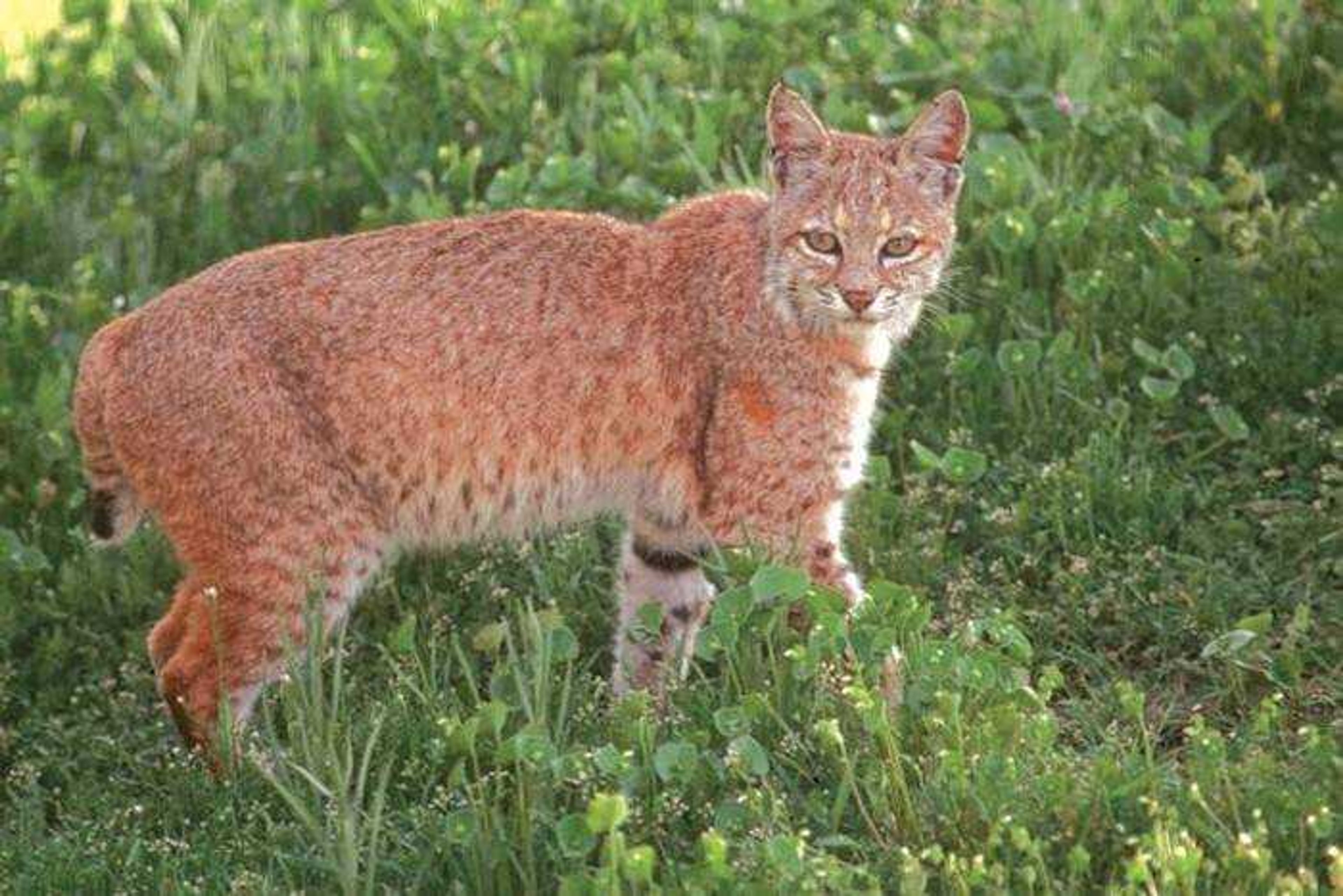They are the most common large predator in Missouri, more numerous than foxes or bears. And they are commonly mistaken for their even larger cousin, the cougar or mountain lion.
Bobcats, or lynx as they are also known, aren't much bigger than a large house cat. There are about 15,000 bobcats in Missouri, according to state Department of Conservation officials, and trappers in Cape Girardeau County have been taking them in increasing numbers in recent years.
During the most recent trapping season, which ended Feb. 15, trappers collected pelts from 34 bobcats.
"There are good bobcat numbers in Cape Girardeau County, and they have expanded into Southern Illinois," said David Hamilton, a furbearer biologist with the conservation agency's research center in Columbia, Mo. "We have seen bobcat populations dramatically improve over the last 15 years."
Reports of sightings, both of bobcats and cougars, surface regularly. And while those reports include sightings near the Cape Girardeau Conservation Campus Nature Center, nothing has been confirmed, said Ken West, regional supervisor for wildlife protection.
The hiking trails at the conservation campus in North County Park go into some wooded areas, West noted. "I wouldn't be at all surprised if somebody saw one, but I would be surprised if it was more than just once in a while. They are a nocturnal critter that normally only comes out at night."

A common bobcat weighs about 20 pounds, Hamilton said, with the largest in Missouri reaching 30 to 35 pounds. Cougars, a much larger animal at up to 150 pounds, aren't believed to have a viable breeding population in the state, he said.
Wandering in
Of more than 1,000 reports of cougars since 1994, he said, only eight have been confirmed. The closest confirmed sighting of a cougar in Missouri was in Reynolds County, he said.
"They are wandering in from the mountain states," Hamilton said. "A lot of people confuse them with other animals. We have lots of evidence of them being misreported."
Bobcats normally hunt rabbits and mice, but have been known to tackle white-tail deer, especially fawns, in early summer, Hamilton said.
"They like any place with cover and cottontail rabbits," he said.
While there are stories circulating of bobcat or cougar sightings at the Conservation Campus, none has been reported this year, said April Dozier, director of the campus.
"It is not uncommon for people to see bobcats," Dozier said. "But I am not aware of any reports this year."
A sighting near the conservation campus, however, wouldn't surprise her, she said. "When you look at where the county park sits, it is fairly rural, with adjacent wooded areas and little development," she said.
A sighting of a bobcat near the conservation campus would be unusual but would not result in a search to confirm the identity of the animal the way reports of cougars in the area caused a stir last summer, Dozier and West both said.
"I've been an agent for 24 years, and I have seen three bobcats in my career," he said. "They are mostly nocturnal, and the times I have seen them alive is when they are walking across a road."
rkeller@semissourian.com
335-6611, extension 126
Connect with the Southeast Missourian Newsroom:
For corrections to this story or other insights for the editor, click here. To submit a letter to the editor, click here. To learn about the Southeast Missourian’s AI Policy, click here.








